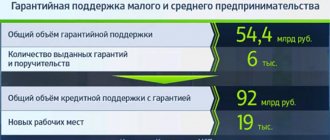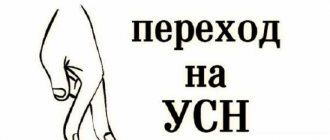What insurance premiums go to extra-budgetary funds. Payers
Insurance premiums (STI) mean regular payments made without fail. They provide a decent pension in the future, payment of sick leave and benefits for children, and free medical care.
Contributions are made by entrepreneurs, employers and self-employed persons.
An individual entrepreneur whose staff includes employees is obliged to transfer funds not only for himself, but also for his employees. STV means amounts intended for insurance: (click to expand)
- pension. Funds are accumulated in the Pension Fund;
- from accidents that may occur during the production process, from occupational diseases. Funds are transferred to the Social Insurance Fund;
- medical (MHIF).
Funds should be transferred unconditionally to extra-budgetary funds:
- Persons paying salaries and other types of remuneration to employees:
- companies and firms with the status of legal entities;
- IP;
- individuals without individual entrepreneur status.
- Businessmen practicing privately according to the rules established by law. Their distinctive feature is that entrepreneurs work independently and do not have official employees or assistants who are paid wages.
Important! When the STV payer can simultaneously be classified into several categories, then he is obliged to pay funds for each basis separately.
What are extra-budgetary funds
These are institutions that operate independently of budgets at any level. Their purpose is to satisfy the socio-economic needs of citizens, such as:
- provision of pensioners;
- health protection;
- support for motherhood and childhood.
They help realize the constitutional rights of the population. Transfer of contributions is mandatory for employers. Individual entrepreneurs also pay them for themselves.
In accordance with Article 419 of the Tax Code of the Russian Federation, individuals can also be payers. This applies to self-employed citizens who do not officially work anywhere, but want to have social guarantees.
Features of control over STV
For a long time, issues of calculation and payment of STV were regulated by a law adopted in 2009. Since 2021, their administration has been entrusted to tax authorities, and issues regarding payment are covered in the Tax Code (Chapter 34). At this time, ETS payers should be guided by the provisions of this chapter. The basic principles relating to taxes have also been extended to the STV.
Starting from the first quarter of 2021, STS payments are sent not to the Pension Fund of Russia, but to the tax authorities. They become part of NK.
Only regulations regarding injuries remain under the control of the FSS. The Fund continues to accept proper reporting.
Personalized reporting continues to be under the control of the Pension Fund (
Other fiscal withdrawals
In addition to the main classification, the following payments can be noted as part of the fiscal burden:
- fee for negative impact on the environment;
- shopping and resort fees;
- payments for mining;
- contributions for injuries (insurance against accidents and occupational diseases);
- other forms of seizure.
A distinctive feature of such forms of withdrawal is that the norms are approved not by the Tax Code of the Russian Federation, but by other legal acts of the Russian Federation. However, all these fees and payments can be safely attributed to fiscal payments. This is also due to the fact that most taxpayers do not care on the basis of what legal act a specific type of state seizure is made. To a large extent, payers of fiscal burden are interested in the size of obligations, current benefits and concessions, as well as ways to reduce the burden of taxes, duties and fees.
Let us note that the current legislation provides for a variety of forms, schemes and methods for optimizing taxes and minimizing fiscal obligations. Read more about how to significantly reduce the amount of payments to the budget in the special material “Legal ways to optimize taxation.”
Insurance premium rates in 2017-2021
The established tariffs are general and reduced.
For most taxpayers, the following deduction amounts apply: (click to expand)
| Rates | Pension Fund | FSS | Compulsory Medical Insurance Fund |
| Within the established limit of earnings | 22,0 | 2,9 | 5,1 |
| Over size limit | 10,0 | – | – |
The current tariffs remain unchanged for three years.
To determine the amount of contributions to the Pension Fund and the Social Insurance Fund, a maximum base value has been established. It amounts to 711.0 thousand rubles, respectively. and 670 thousand rubles. In excess of the established limit, funds are transferred to the Pension Fund at a reduced rate of 10%, and are not sent to other funds at all.
As for the compulsory medical insurance tariff, its size does not depend on the volume of salary payments. In 2021, all income without any restrictions is subject to a rate of 5.1%.
The specific STV tariff in the Social Insurance Fund depends on which class of pro-free the employer’s activities belong to. The company transfers from 0.2% to 8.5%, insuring against accidents.
Important! The limit that serves as the basis for the ETS must be indexed annually. The basis is the growth of earnings on average across the country.
Penalties for non-payment of insurance premiums
For non-payment of insurance payments, legislative acts provide for the following sanctions:
- Penalties for each day of non-payment in the amount of 1/300 of the refinancing rate (from October 1, 2021, it is planned to increase the penalty for non-payment for organizations to 1/150 of the refinancing rate if the delay exceeds 30 days).
- The fine for non-payment is 20% of the debt amount if the violation of the law was not planned (in other words, you might have forgotten to transfer money to the Federal Tax Service).
- A fine of 40% of the outstanding premiums if the non-payment is intentional (for example, you deliberately do not pay payments or lower the insurance rate).
It is worth noting that the above measures are taken in relation to the following offenses related to non-payment of contributions:
- Lack of payment;
- Failure to meet the payment deadline;
- Partial payments;
- Incorrect payment calculation (for example, you made a mistake in some number);
- Understating the basis for calculating contributions.
For a significant number of policyholders, STV tariffs have been reduced:
| Policyholders | Pension Fund | FSS | Compulsory Medical Insurance Fund |
| Companies, firms, individual entrepreneurs on the simplified tax system. A prerequisite is a maximum income of 79 million rubles. | 20,0 | 0 | 0 |
| Pharmacy establishments, individual entrepreneurs that have received a license to sell dosage forms on UTII. Reduced rates - only for workers engaged in pharmacy activities | 20,0 | 0 | 0 |
| IP for PSO | 20,0 | 0 | 0 |
| IT companies and firms | 8,0 | 2,0 | 4,0 |
| Participants of the Skolkovo project | 14,0 | 0 | 0 |
| Enterprises involved in free economics. zone in Crimea | 6,0 | 1,5 | 0,1 |
Important! This list contains incomplete information. To supplement it, you need to read Art. 427 NK.
Timing and sequence of payment of stipulated funds to extra-budgetary funds
The period of time that determines the payment of STV has remained unchanged for several years. All ETS must be deposited into the appropriate funds by the 15th of the following month. This date is the final date. But if it falls on a holiday or weekend, then the deadline is moved to the next working day.
It is important not to forget that:
- STV accounting is maintained and payment is made in rubles. and kop.;
- The employer maintains an STV registration card for each employee.
STV payment sequence: (click to expand)
- The amounts are recorded during the payroll process.
- The policyholder pays them within the stipulated period of time - fills out payment slips with the relevant details and amounts, and sends them through the bank.
- The payer draws up the appropriate entries and keeps records of accruals and payments of STV.
- Relevant reports are generated quarterly and sent to the Federal Tax Service and the Social Insurance Fund.
You should constantly check the existence of debt under the STV. To do this, you can send a written application requesting a certificate of debt or find the necessary information online using the information service on the website of the Pension Fund of the Russian Federation or the Federal Tax Service (
Sanctions for late payment of STV
Responsibility regarding STS arises for the taxpayer when the reason for their non-payment:
- during the calculation, the base for STV accruals was underestimated, that is, the policyholder missed out on some amount subject to STV;
- incorrect calculation of STV. For example, the policyholder used a reduced tariff in the calculation completely unreasonably;
- other actions (inactions) of the entrepreneur-insurer that are recognized as unlawful.
Fines:
| Violation | Fine, % of the unpaid amount |
| Delay in reporting | 5,0 Minimum 1000.0 rub. and a maximum of 30% of the total payment amount |
| Underestimation of the basis - basis for determining the size of the STV | 20,0 |
| Deliberate non-payment of STV | 40,0 |
When a company misses the deadline for paying the STV, the penalty begins to increase from the next day. Its size is (in%):
- overdue for more than 30 calendar days. days – 1/300 of the Central Bank refinancing rate;
- from the 31st day of delay - 1/150 of the above refinancing rate.
Example 1. made a transfer of STV to the Pension Fund for April on June 15. The delay was 30 days. 180 thousand rubles were sent to the extra-budgetary fund.
The penalty is:
180,000 · 9.25%* · 1/300 · 30 = 1,665 rub.
*Central Bank key rate in May-June 2021
Vector's accountant will make the following entries:
Dt 99 CT 69 1,665.0 penalty accrued
Dt 69 Kt 51 1,665.0 fine transferred to the budget
Important! When an enterprise was unable to pay the STV on time, it is beneficial for it not to delay, but to find funds and send them to the appropriate funds within the next 30 calendar days. days.
Funds of the Russian Federation
Currently, both budgetary and extra-budgetary funds of different levels operate on the territory of the Russian Federation (federal, regional, municipal, individual enterprises, charitable). They are subject to Russian legislation and contribute to the development of individual regions and industries. So does the entire state as a whole.
Sources
- https://newinspire.ru/l/2/22/946-ponyatie-i-vidy-fondov.html
- https://FB.ru/article/458234/byudjetnyie-fondyi—eto-ponyatie-vidyi-i-ispolzovanie
- https://jurkom74.ru/ucheba/tselevie-biudzhetnie-fondi-ponyatie-vidi-znachenie
- https://spravochnick.ru/ekonomika/pravitelstvo_i_hozyaystvo/byudzhet_i_vnebyudzhetnye_fondy/
- https://www.grandars.ru/student/finansy/vnebyudzhetnye-i-byudzhetnye-celevye-fondy.html
- https://spravochnick.ru/pravo_i_yurisprudenciya/gosudarstvennye_vnebyudzhetnye_fondy_v_rf/
- https://jurkom74.ru/ucheba/vnebiudzhetnie-fondi-kak-element-biudzhetnoy-sistemi-rossii-ponyatie-vidi-znachenie-pravovie-osnovi-deyatelnosti
- https://fingramm.ru/fondy.html
[collapse]
Features of paying individual entrepreneur contributions
For individual entrepreneurs, the STV tariff in the Pension Fund of the Russian Federation is 26%, in the Compulsory Medical Insurance Fund – 5.1%. The calculation is made based on the minimum earnings. Its amount since July 1, 2017 is 7800 rubles. The previous value is 7500. It is this that is used in determining the fixed amount of the stipend, since the Tax Code provides for the calculation of the minimum wage at the beginning of the calendar year.
When the annual income of an individual entrepreneur is no more than 300 thousand rubles, the size of the stipend in the PF will be:
7500 · 12 months · 0.26 = 23,400.00
If the receipts exceed 300 thousand rubles, he will need to add another 1% of the receipts exceeding the specified amount in addition to the amount calculated above.
The maximum annual size of STV in the Pension Fund for individual entrepreneurs is 187.2 thousand rubles. (eight times the minimum wage).
Income does not affect the STV in the MHIF. For the year they are:
7500 · 5.1% · 12 months. = 4,590.00 rub.
Individual entrepreneurs pay contributions to the Social Insurance Fund voluntarily. When the individual entrepreneur decides to include them, the amount will be:
7500 · 2.9% · 12 months. = 2,610.00 rub.
Important! The basis for calculating the STV is the minimum wage at the beginning of the calendar year.
Insurance premium rates 2021 for individual entrepreneurs
Since 2021, the amount of individual entrepreneur contributions is not tied to the minimum wage. The Tax Code of the Russian Federation now specifies the amount of fixed payments in rubles
For entrepreneurs whose income does not exceed 300 thousand rubles, the amount of contributions for compulsory pension insurance and compulsory health insurance is paid in a fixed amount.
However, individual entrepreneurs whose annual income is more than 300 thousand rubles must pay additional pension contributions at a rate of 1%. That is, if the income of an individual entrepreneur for a year exceeds 300 thousand rubles, then in addition to fixed contributions, the entrepreneur must transfer to the Federal Tax Service an additional amount in the amount of 1% of the amount exceeding the limit (clause 1 of Article 430 of the Tax Code of the Russian Federation).
Common mistakes in paying STV
In practice, mistakes often occur regarding the payment of STV. They are encountered not only by entrepreneurs. For example, Pension Fund specialists may incorrectly post payments in their system. Or an accounting employee of the enterprise made a mistake of this kind. As a result, part of the STV was not included in the calculation.
It happens that the amount of the incoming STV balance does not match.
Other common errors include: (click to expand)
- Inconsistency between the employee’s passport data and his full name, SNILS. Such distortions are detected automatically and the calculation is not accepted. The taxpayer receives information about the presence of an error. He should make corrections and submit an updated calculation. In this case there is no penalty.
- Discrepancies between the total amount of PTS and their amounts for individual employees. An updated calculation is submitted in this case as well.
- The calculation of the STV for a foreign specialist of a company temporarily residing in the country and working under a contract was done at the wrong rate. The accountant did not take into account that the employee is a highly qualified specialist. For such foreign workers, contributions should be calculated only for injuries. There are no other STVs. The accountant will need to recalculate and send an additional report.
Postings for transferring STV amounts and calculation formula
The STV accounting accounts remain unchanged. It just doesn’t hurt to take into account the possibility of additional assessments of contributions for periods that have already passed. It is reasonable to introduce additional subaccounts to the account. 69.
Basic bu. STV records are as follows:
| Contents of operation | Debit | Credit |
| STV accrued | 20 (25, 26, 44) | 69 (plus subaccounts for each type of insurance) |
| STV paid | 69 | 51 |
| Benefits accrued at the expense of the Social Insurance Fund | 69 | 70 |
| Benefits reimbursed by social insurance | 51 | 69 |
To determine the STV calculation base, the formula is used:
STV is calculated as follows:
STV = Calc. base · tariff
Example 2. The marketer of Vector LLC, R.L. Litvinova, received a salary of 32,250 rubles in April. She was ill for ten days. The benefit amount is 10,750 (at the expense of the employer - 3225, and the Social Insurance Fund - 7525). Postings:
| Debit | Credit | Amount, rub. | Operation |
| 44 | 70 | 32 250 | Calculation of earnings for April |
| 44 | 69.1 | 935,25 | Accrual of STV by time. disability and maternity |
| 44 | 69. 2 | 7 095,0 | STV for pension insurance. |
| 44 | 69,3 | 1 644,75 | Medical fees insurance |
| 44 | 69.11 | 258,00 | Insurance premiums against accidents. cases |
| 44 | 70 | 3225,0 | Sickness benefit accrued at the expense of the employer |
| 69.1 | 70 | 7525,0 | Benefit from the Social Insurance Fund has been accrued |
| 69.2 | 51 | 7 095,0 | Pension Fund contributions paid |
| 69.3 | 51 | 1 644,75 | Payment of STV for medical insurance |
| 69.11 | 51 | 258,00 | Payment of contributions to the Social Insurance Fund for injuries |
| 51 | 69.1 | 6589,75* | Reimbursement received from the Social Insurance Fund |
*When making compensation, the Social Insurance Fund takes into account the amount of stipulated time period. disability and motherhood.
Responsibility for non-payment of insurance premiums
There are the following types of liability for non-payment of contributions:
- Tax - occurs in case of minor errors made by an individual entrepreneur or an official of the company. In such a situation, a penalty is charged.
- Administrative – occurs when gross errors are made, which lead to a significant reduction in the base for calculating contributions, and, consequently, a decrease in the amount of the latter.
- Criminal - occurs in extreme cases when the amounts of debt are too large. Ordinary organizations with a small overdue payment are not afraid of this type of liability.
Criminal prosecution may have the following consequences:
- An individual (IP) can be fined up to 300,000 rubles and arrested for up to 36 months;
- An official of an organization may be imprisoned for up to 6 months, fined up to 500,000 rubles, or required to vacate his position for a period of up to 3 years.
Rate the quality of the article. Your opinion is important to us:








